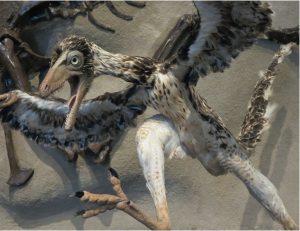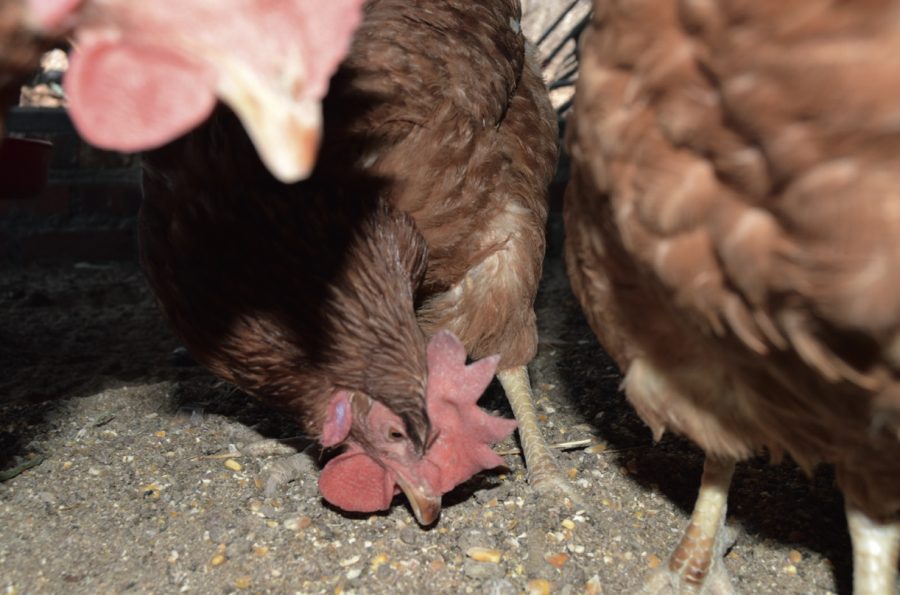Paul Donovan looks at the structure of the chicken’s digestive system.
The digestive system of the chicken very much follows the blueprint of other birds, in that it is simple
in structure. In order for birds to fly, even though chickens are not very good at doing that, they need to keep down their body weight to energy expenditure ratio. In other words, the lighter they are, the less energy is required to take off and sustain flight. We can see how this has taken place through the evolution of a very lightweight, but strong skeleton. But equally, significant changes have taken place in the digestive system when compared to mammals.
Although we say the digestive system is simple in structure, when compared to mammals, it is still highly efficient in its ability to breakdown food, and supply the body with all the nutrients it requires to function. The chickens alimentary canal is like a tube, food enters at one end (the mouth), and waste matter passes out the other (the cloaca), but there are process and structures in between which breakdown the food and allow its absorption which mammals do not have.
BEAK
The beak is the start of the digestive system. Modifications here, such as the loss of teeth, mean adaptations elsewhere in the system (the crop) to counteract this have taken place. The beak is formed from keratin, the same protein as your finger nails are composed of. The so-called egg tooth is found at the end of the beak in newly hatched chicks. This tooth allows the chick to chip its way out of the egg, and falls off after a few days after hatching. The beak is responsible for picking up food.
SALIVARY GLANDS
Salivary glands are present in various regions of the mouth. As food is ingested, it is mixed with saliva and mucous produced in the mouth, and oesophagus. These secretions moisten the food, and begin the digestion process. Although digestion may begin here, it is only minimal, for the major breakdown of food due to enzyme activity, takes place in the proventriculus and gizzard.
PHARYNX AND TONGUE
Situated between the mouth and oesophagus, is the pharynx. This region helps the bird to swallow food. The tongue is a muscular organ used to manipulate food, assist in swallowing, breathing and taste. It’s surface is covered in papillae. These are projections helping to grip food and move it down the oesophagus. The tongue has only a limited number of taste buds; 24, compared to 10,000 in humans.
Chickens, then, have only limited taste ability, but can differentiate between sweet and sour. Of course, as it is the first line in digestion, its surface is covered in mucous glands.
OESOPHAGUS
The oesophagus is a flexible tube capable of considerable expansion. It connects the mouth to the crop, and the crop to the proventriculus. Along its length, is a mucous membrane which lubricates food, so facilitating its movement down the digestive tract.
THE CROP
Although we associate the crop as being an anatomical feature of birds, it is also found in earthworms, insects, slugs, snails and leaches. Of course, it is structurally different through these groups.

Evidence suggests changes in the digestive system occurred approximately 130 million years ago
Evidence points to the evolution of the crop occurring some 130 million years ago, to around the time of the Early Cretaceous era. Its appearance changed not only the birds diet (they largely became seed eaters), but the way in which the birds feed. It is also believed to have contributed to the loss of teeth in birds. Having said that, not all birds have a crop, it is absent in pigeons and doves, owls, and buttonquail.
The crop can be viewed as being like an expandable pouch, and situated in the gullet, or throat region. When food is swallowed, unlike in mammals, it does not enter the stomach, but is ‘stored’ in the crop. Over the course of the day, as the bird forages, the crop will expand. In some species such as vultures, this can be quite considerable, to the point where they are unable to take off and fly.
When the individual takes up its night-time roosting, the crop will slowly be emptied. As we all know, a hen roosting with a full crop, is a contented bird. As the food begins to be digested, this is what gives the individual its energy to begin the next day’s activities. Food can remain in the crop for up to 12 hours before it is slowly transferred to the stomach where digestion occurs. A series of muscles at the base of the crop slowly squeeze (peristaltic contractions) food out of the crop towards the stomach. Because of its ability to store food, the crop effectively gives the bird continuous digestion.
STOMACH
The stomach comprises of two parts; the proventriculus, or glandular stomach, and the gizzard. The proventriculus is where various secretions (hydrochloric acid, the enzyme Pepsin, and the hormone gastrin; this hormone stimulates the production of pancreatic juice from the pancreas) are secreted and digestion begins to breakdown food into absorbable nutrients. The stomach is relatively small and tubular in shape with thick walls.
Its mucous membrane lining is formed into a series of folds. These folds not only increase the surface area of the proventriculus, but between them are glands which secrete hydrochloric acid, the main digestive enzyme.
To receive regular copies of The Country Smallholder magazine featuring more articles like this, subscribe here.
For FREE updates from the world of smallholding, sign up for The Country Smallholder newsletter here.








